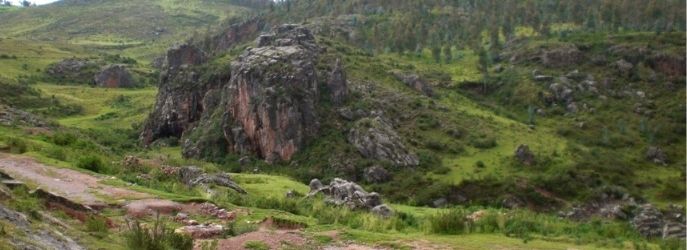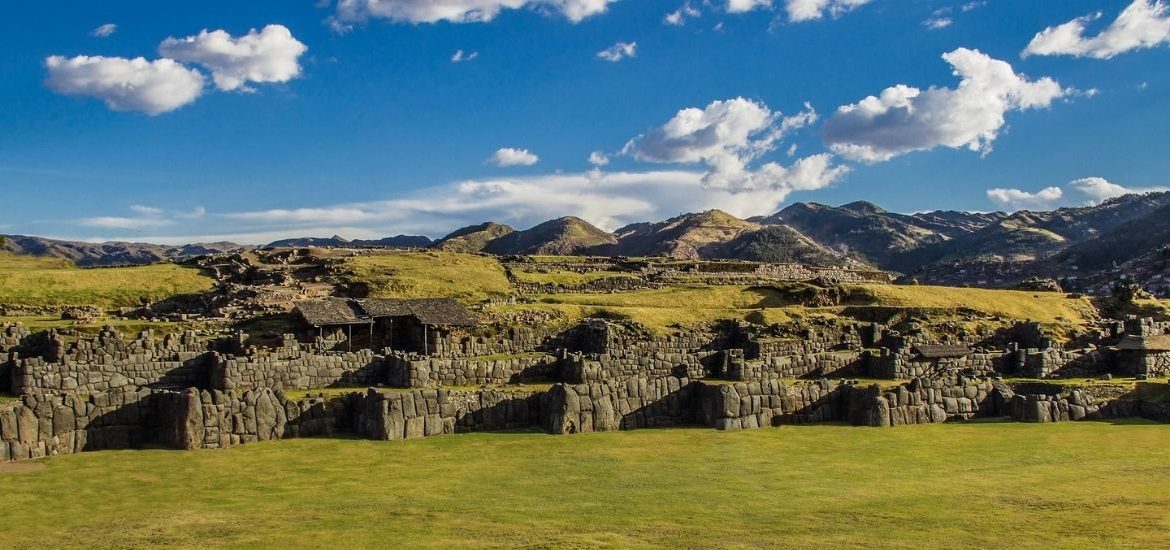The former capital of the Incas holds impressive pre-Columbian settings in its surroundings and though most of them belong to the famous Quechua civilization, a few others were traced back to other civilizations that predated them.
When it comes to Inca architecture, the city of Cusco is one of the main examples since some of the most important colonial structures are built on top of Inca settlements that have impressively withstood centuries of earthquakes.
So, if you are into history and archeology as much as we are, then you’ve found the right blog! On this occasion, we have gathered some of the most important archeological sites near Cusco, so you can make the best itinerary for your trip!
1. The Ceremonial Fortress of Sacsayhuaman

The Sacsayhuaman Archeological Site is one of the most popular Inca settlements around Cusco since it is the nearest one and grants sweeping views of the city and its surroundings.
However, that’s not all it is famous for, this megalithic structure was built with giant stones that measure over 5 meters in height and weigh over 120 tons. Each stone fits perfectly into one another and archeologists haven’t confirmed how the Incas managed to move or carve them.
According to historians and Spanish chroniclers from the colonial era, this Inca site was built with ceremonial purposes but recent studies and excavations have shown that it may have had military and administrative purposes.
Unfortunately, most of the structure was sacked and dismantled by the Spanish colonizers, who took most of the stones to build the colonial Cusco, leaving just the largest ones behind.
To visit this attraction, you must purchase the Cusco Tourist Ticket, which includes several entrances for historical monuments, archeological sites and museums. Likewise, you can also join an archeological city tour to visit this and some of the attractions below.
2. The Temple of Q’enqo

Located just a few meters from Sacsayhuaman, lies one of the gloomiest structures around Cusco. The Qenqo Temple was one of the most sacred places for the Incas, reason why the Spanish colonizers destroyed it almost entirely.
According to chroniclers, this was a place of mummification and sacrifices, a theory that has been confirmed by archeologists. The Incas took this natural rock formation and adapted it for ceremonial purposes.
The Qenqo ceremonial center comprehends large carved rocks forming a cave shape, its interior is decorated with three representative figures of the Andean cosmology: The condor, the cougar, and the snake.
Just like most of the archeological sites around Cusco, you will also have to acquire the Cusco Tourist Ticket, and you can visit it on the archeological city tour as well.
3. Tambomachay: The Bath of the Inca

The Incas are surely the greatest builders of ancient South America, this powerful civilization is characterized for their impressive structures and engineering knowledge. Tambomachay, for example, comprises three water fountains that have been functioning since centuries ago.
Luckily, this is one of the Inca constructions that wasn’t severely damaged during the Spanish conquest, but information is very limited about this site. However, further investigation has shown that this place could have been a water cult temple, thanks to its similarities to the ones found in the Sacred Valley of the Incas.
Etymologically, Tambomachay means “Place of Rest”, which is why it is also believed that it served as a resting point for the Inca messengers or even the Incas themselves.
The site consists of a series of aqueduct canals and waterfalls, four walls that fit perfectly to a base held by three parallel terraces. The principal water fountain in this structure is called Ñusta Bath since it is similar to the ones found in Ollantaytambo, there are two more waterfalls that consistently supply the same amount of water.
This attraction is also included in the Cusco Tourist Ticket and you can easily visit it with the Archeological City Tour.
4. Puca Pucara: The Red Fortress

The Incas had different control points scattered around the region and the Puca Pucara archeological site might have been one of them. This ancient structure is located on a privileged location on top of a mountain, overlooking the city of Cusco.
This famous Inca structure sits on the edge of a mountain. Although its purpose was mainly military, it also served as an administrative center. Puca Pucara means Red Fortress in Quechua, a name given due to the red coloration of the stones found in its structure.
The place comprises four ambiences, where two walls support the terraces that surround it. Due to its importance during the Inca era and its strategic location, Puca Pucara was designated as Cusco’s Cultural Heritage by the National Institute of Culture.
This attraction is also included in the Cusco Tourist Ticket and our Archeological City Tour. Contact us now and discover more about the things to do in Cusco.
5. Temple of the Moon

The Moon Temple is a ceremonial center situated in an enormous rock formation that rises up to 80 meters of height. It is located 1 kilometer away from the Qenqo Temple.
According to the excavations carried out on the site, burying areas, agricultural terraces, irrigation channels among others structures were found, indicating that this was an important religious temple for the Inca culture.
The Moon Temple comprises a remarkable finish on its structures along with carvings representing the ‘Andean trinity,’ such as the condor, the cougar and the snake. However, this place must not be confused with the Temple of the Moon in Huayna Picchu mountain since that one is located in Machu Picchu.
You can easily visit it by taking a taxi, walking from the San Blas neighborhood or Qenqo. The natural setting here is nearly unspoiled, comprising a valley surrounded by towering hills and enormous rocks.
6. Tipon: A royal precinct or agricultural center?

It is one of the perfect examples of the hydraulic engineering knowledge of the Incas, where most of its aqueducts and water fountains have kept functioning perfectly. Unfortunately, there are no official records that can confirm the real purpose of this construction nor its original name.
The archeological site consists of wide agricultural terraces irrigated by a network of water channels fed by a natural spring and it covers an extension of 239 hectares. The Tipon Archeological Complex is also part of the Qhapaq Ñan, a trail network commonly known as the Inca Trail, which connected the whole Inca Empire.
According to the structures found on the place, Tipon could have been a royal precinct or simply an agricultural center since it holds many agricultural terraces and an Intihuatana, which was used to keep track of the position of the sun and keep track of the climate conditions.
If you’d like to visit this wonder of ancient Cusco, you can easily do it by taking the South Valley Tour. This archeological site is also included in the Cusco Tourist Ticket.
7. Pikillacta: The Flea City

The Pikillacta Archeological Site was built between the VI and IX centuries, just at the peak of the Wari culture. The first archeologists in studying the complex thought that the structure belonged to the Incas, however, the elements used in the construction weren’t typical of this civilization and its architectural style is linked to the Wari culture.
The complex is one of the largest pre-Inca places within the Cusco region since it has an extension of 50 ha. Likewise, the Pikillacta citadel is composed of 700 buildings, 200 courts, 508 storages or colcas and many other buildings.
According to historians, Pikillacta was indeed one of the most significant settlements of the Wari culture. They certainly influenced the architecture and engineering techniques of the Tahuantinsuyo Empire, which is why the Incas are recognized for adapting and improving these methods in a splendid way.
The archeological site served as a ceremonial, administrative, and residencial center, which housed around 10,000 people. Its strategic location gave them control over the Quispicanchis valley and part of the Vilcanota valley, confirming its purpose as a military center as well.
This historical attraction is also included in the South Valley of Cusco Tour and within the Cusco Tourist Ticket.
As you can see, Cusco is not all about Machu Picchu, it comprises even more ancient structures that you may not know about. If you’re planning the perfect adventure in the ancient country of the Incas, we recommend you to check our Peru travel packages for a little travel inspiration.

